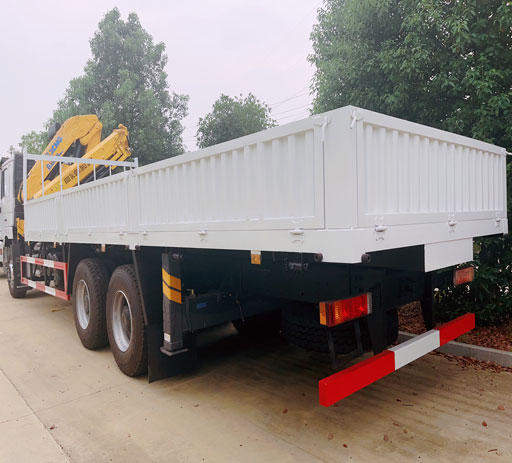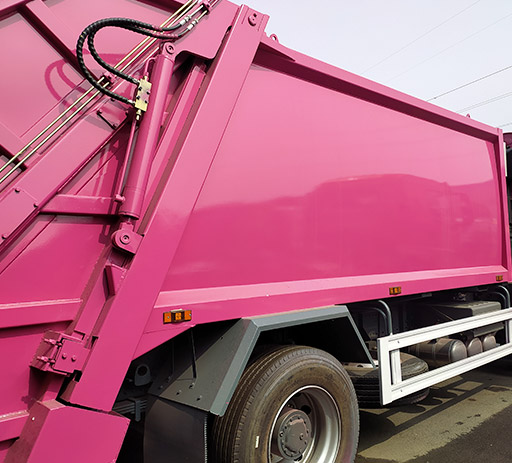Understanding Rear Loader Garbage Trucks: Everything You Need to Know

In the modern world, waste management has become a critical component of maintaining cleanliness and hygiene in our communities. Among various types of waste collection vehicles, rear loader garbage trucks play a vital role. This article explores everything you need to know about rear loader garbage trucks, from their design and functionality to their benefits and usage.
What is a Rear Loader Garbage Truck?
A rear loader garbage truck is a type of waste collection vehicle designed to collect and transport refuse. As the name suggests, waste is loaded from the rear of the truck, allowing for efficient garbage collection in residential areas and commercial establishments. The design often includes a large hopper at the back, equipped with an automatic or manual compaction system, which compresses the waste to maximize capacity.
The Design of Rear Loader Garbage Trucks
Key Components
Understanding the design of rear loader garbage trucks helps in appreciating their functionality. Key components include:
- Hopper: This is the main compartment at the back where waste is loaded.
- Compression System: Mechanisms that compact the waste for efficient storage.
- Cab: The front section where the driver sits, often equipped with advanced technology for navigation and safety.
- Chassis: The supporting structure that houses all truck components.
Types of Rear Loader Garbage Trucks
Rear loader garbage trucks come in various sizes and configurations, including:
- Standard Rear Loaders: Used primarily for residential waste collection.
- Heavy Duty Rear Loaders: Designed for commercial or industrial waste management.
- Dual-Stream Rear Loaders: Capable of separating recyclables from waste during the collection process.
How Do Rear Loader Garbage Trucks Work?
Understanding how rear loader garbage trucks operate can offer insights into their efficiency. Here’s a breakdown of the operational process:
Collection Process
- Routing: The truck follows a predefined route to collect waste from various locations.
- Loading: Waste is dumped into the rear hopper, either manually by sanitation workers or automatically using a lift system.
- Compaction: The compaction system compresses the collected waste to maximize space.
- Transport: Once the hopper is full, the truck transport the waste to a landfill or waste processing facility.
- Disposal: The waste is offloaded for proper disposal or processing.
Benefits of Rear Loader Garbage Trucks

Rear loader garbage trucks offer numerous advantages, making them a preferred choice for waste collection. Some of the key benefits include:
Efficiency
Rear loaders are designed for systematic waste collection, which can significantly reduce the time it takes to collect garbage from an area.
Space-Saving
The compacting feature allows trucks to carry a larger amount of waste, reducing the number of trips to disposal sites.
Accessibility
Rear loaders can easily navigate through tight spaces, making them suitable for urban and suburban environments.
Safety
With drivers seated at the front of the truck, they have a better view of their surroundings, reducing the risk of accidents during collection.
Practical Considerations in Using Rear Loader Garbage Trucks
Choosing the Right Truck
When selecting a rear loader garbage truck, consider the following factors:
- Load Capacity: Ensure the truck can handle the expected waste volume.
- Size: Choose a truck size that can maneuver around your service area.
- Features: Look for additional features such as automated lifting systems and safety upgrades.

Maintenance Needs
Regular maintenance is crucial for the longevity of rear loader garbage trucks. Key maintenance practices include:
- Daily Checks: Inspecting fluid levels, tires, and the compaction system.
- Quarterly Services: Comprehensive checks every three months to ensure optimal performance.
- Record Keeping: Maintain records of service to identify trends or recurring issues.
Examples of Rear Loader Garbage Trucks in Use
Many municipalities and companies worldwide use rear loader garbage trucks. For instance:
| City/Company | Number of Trucks Operated | Type of Service |
|---|---|---|
| City of New York | 300+ | Residential Waste Collection |
| Waste Management, Inc. | 1,500 | Commercial and Residential Collection |
| City of Los Angeles | 400+ | Recyclables and Organic Waste Collection |
Impact on Environmental Practices
Rear loader garbage trucks contribute to environmental sustainability in the following ways:
Recycling Initiatives
Many cities utilize rear loaders for dual-stream collection, allowing the separation of recyclable materials from general waste. This practice promotes recycling and minimizes landfill usage.
Efficient Fuel Consumption
Modern rear loader trucks are designed with fuel efficiency in mind, helping reduce the overall carbon footprint of waste management operations.
Community Engagement
Effective waste management encourages community participation in recycling and waste reduction, fostering a culture of environmental responsibility.
Challenges Faced by Rear Loader Garbage Trucks
While rear loader garbage trucks have many advantages, they also face challenges:
Operational Limitations
Certain areas may present challenges due to narrow streets or heavy traffic, impacting the efficiency of rear loaders.
Driver Safety
Despite better visibility, the risk of accidents still exists, requiring ongoing training for drivers to adhere to safety protocols.
Cost
High initial investment and maintenance costs can be barriers for smaller waste management companies or municipalities.
Future of Rear Loader Garbage Trucks
As technology evolves, rear loader garbage trucks are adapting. Some future trends include:
Technology Integration

Integration of GPS for optimized routing, real-time waste tracking, and automated loading systems to enhance efficiency.
Electrification
The transition to electric rear loader trucks promises to reduce carbon emissions and operational costs, promoting sustainable waste management.
FAQs
What is the average lifespan of a rear loader garbage truck?
The average lifespan of a rear loader garbage truck can range from 10 to 15 years, depending on maintenance and usage.
Are rear loader garbage trucks more efficient than front loaders?
Rear loader garbage trucks are typically more efficient in residential areas due to their ability to navigate narrow streets and compact larger loads effectively.
How often do rear loader garbage trucks need servicing?
It is recommended that rear loader trucks undergo daily checks and comprehensive services every three months to ensure optimal performance.
Can rear loader garbage trucks recycle waste?
Yes, many rear loaders are equipped for dual-stream collection, allowing them to separate recycling from general waste during collection.
Is it necessary for workers to manually load waste into rear loaders?
While manual loading is common, many modern rear loader trucks include automated systems that can lift bins and containers, reducing manual labor.
Where can I find near loader garbage truck for sale?
Rear loader garbage trucks can be purchased from specialized vehicle dealers, auctions, and online marketplaces focused on commercial vehicles.
